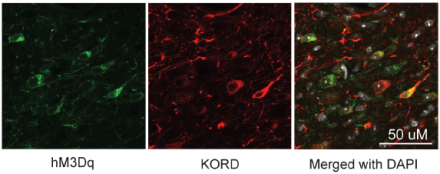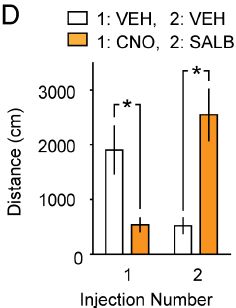
BRAIN Initiative awardee Dr. Bryan Roth recently co-authored a paper in Neuron unveiling the second generation of DREADDs (Designer Receptors Exclusively Activated by Designer Drugs), tools that will allow researchers to turn neuronal activity on and off in multiple cell types simultaneously.
A paper in the April 30 Neuron is one of the first publications of research results from the NIH BRAIN Initiative. Dr. Bryan Roth at the University of North Carolina and colleagues reported the second generation of DREADDs (Designer Receptors Exclusively Activated by Designer Drugs) – tools Roth first developed in 2007. The new DREADD described in this paper directly addresses aims in Roth’s BRAIN grant, and fulfills one of the main goals of the Initiative: accelerating the development and application of innovative technologies.
DREADDs are specific and selective genetically engineered receptors that act as switches to modulate brain circuitry and behaviors. Initially, DREADDs coupled to different receptors could only be activated with the inert compound clozapine-N-oxide (CNO), limiting the degree to which investigators could manipulate neuronal activity and, consequently, behaviors. In this paper, the authors introduce a new “DREADD 2.0” called KORD, which is derived from kappa opioid receptors and activated by a new inert compound, salvinorin B (SALB). In an elegant sequence of experiments, Roth et al. employed KORD to modulate neuronal firing to increase locomotor activity and modulate feeding behavior. The authors demonstrate that combining KORD and SALB with an original DREADD and CNO in the same brain area allows bi-directional control of the targeted neuronal populations and associated behavioral modifications – representing a powerful new tool for neuroscientists.
For more information, please see this NIH press release.


